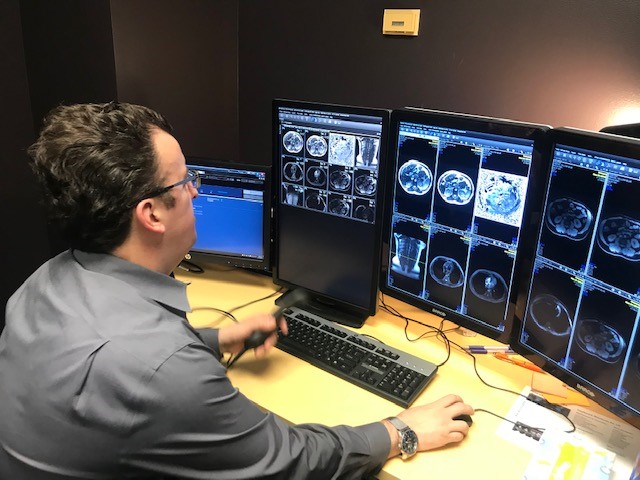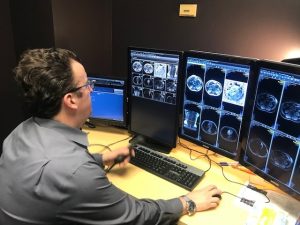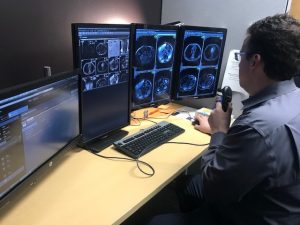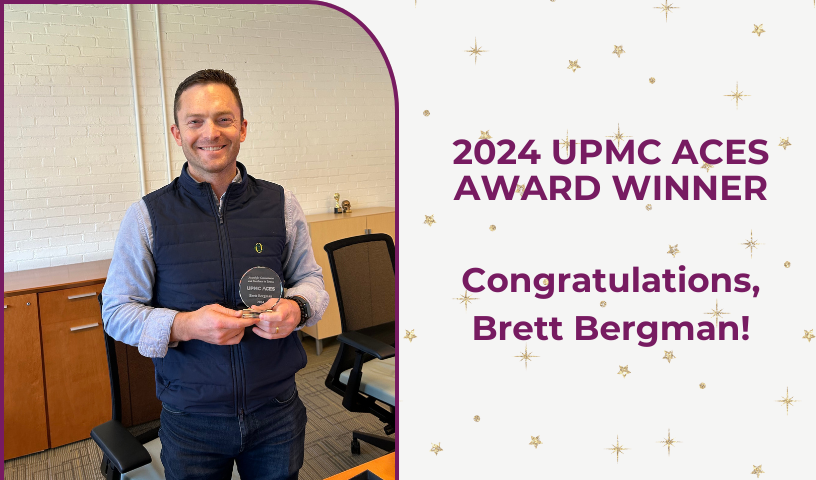
Nov 27, 2018
NGI team to tackle large-scale rollout of GE Healthcare’s Centricity Universal Viewer at 35 UPMC sites by 2020
Next Generation Imaging (NGI) — a joint program between GE Healthcare and UPMC Enterprises — is focusing on the future with a plan to tackle a large-scale rollout of the program’s imaging platform, Centricity Universal Viewer, after two successful installations at UPMC hospitals.
“Our partnership with GE Healthcare has enabled our Enterprises team to be laser-focused on accomplishing the goals of the project. We are excited about the rollout and the benefits it delivers to UPMC staff who have direct impact on patient care,” said Stacy Norman, Senior Product Manager for the NGI team. “We have confidence that our team can get this done.”
Full speed ahead

Working closely with the Enterprise Provider and Development Services group from UPMC’s Information Services Division, the NGI team has established an aggressive timeline to implement the NGI program to 35 sites in the UPMC hospital system by April 2020.
Following completion of the latest implementation at UPMC Horizon, the teams have devised a strategy based on converting groups of hospitals that cross-read for each other. To balance the work of reading charts, radiologists from one hospital will read charts from other hospitals. For example, UPMC East and UPMC McKeesport cross-read each other’s charts, as do UPMC St. Margaret and UPMC Passavant, and UPMC Hamot and the Erie Regional Cancer Center. Go-Lives for these hospital groupings are planned to occur in close succession.
The strategy
To achieve the aggressive pace of the deployments, the NGI program has developed a scalable, repeatable strategy for site readiness and change management for go-lives. The process includes: Discovery, Synthesis, Training, Go-Live and Post Go-Live activities. Click here for more details.
-
Discovery – Collect site specific information, observe clinical and operational workflows, and identify configuration requirements.
-
Synthesis – Assess workflows against product functionality and configurations, develop solutions for site’s custom workflows, begin regular site readiness calls with hospital stakeholders.
-
Training – Update Quick Start guides, conduct hands-on product evaluations as pre-training, execute formal user training with clinical and operational staff.
-
Go-Live – Implement site specific configurations and testing (e.g. interfaces, network, etc.), workstation and PC deployment and validation, provide onsite support during cut over to new system, conduct user observations and gather feedback from Go-Live.
-
Post Go-Live – Close support punch list items, begin transitioning support to normal channels, conduct user observations and gather feedback, provide tips to improve clinical users’ workflow.
Retrospectives are held after each Go-Live and the process is tweaked accordingly. The current three-month go-live cycle is expected to shorten in duration as the teams become more proficient. The overlapping nature of the deployments will keep the teams running throughout 2019 and into the first part of 2020. The deployment will be a significant achievement for NGI and UPMC.
Recent success spurs strategy

The Go-Live strategy was affirmed at UPMC Horizon where the clinical staff began using the Centricity Universal Viewer platform in September 2018 across three locations in Mercer County. It is the second UPMC hospital to be converted to a new picture archiving and communication system (PACS) but the first to have the legacy Philips product replaced by the GE application suite, which includes Centricity Universal Viewer, Workflow Manager, and Zero Footprint Viewer. UPMC Jameson was the first hospital to Go-Live with the imaging platform.
According to Dr. Matthew Bee, Chief of Radiology of UPMC Horizon, “Within a month of going live, our team was used to and largely comfortable with GE’s Universal Viewer. While some enhancements are needed, there are a number of benefits to the change.” Dr. Bee also noted “having the patient’s imaging history in one spot is the primary benefit but features like global stack for plain films has also been a big hit.” Advanced features, such of smart reading protocols, also were pleasers for the doctors.
Feedback on the new system has been positive. Doctors adjusted faster than expected to the new platform and the NGI teams were able to tailor back second-week support. Post-deployment interviews with radiologists indicate overall product acceptance and a high comfort level with the GE system.


